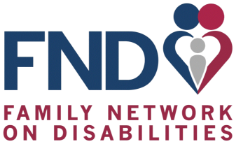INformation Hub
Key Definitions in Part B of IDEA | Defining and Understanding Supplementary Aids and Services
Key Definitions in Part B of IDEA | Defining and Understanding Supplementary Aids and Services
A reference sheet for Parent Centers from the
Center for Parent Information and Resources (CPIR)
June 2017
You can use the reference list in staff or board training, to refresh or deepen your understanding of what key terms in IDEA mean, and to find easy-to-read summaries about these terms on CPIR’s site in English and Spanish. (Note: To print out or share the ENTIRE reference list as one Word or PDF file, use the links at the very top of this page.)
_________________________________
Supplementary Aids and Services
Importance of This Key Term | If special education and related services are at the core of providing student with disabilities with a free appropriate public education, so, too, are supplementary aids and services for many such students. Supplementary aids and services are often critical elements in supporting the education of children with disabilities in regular classes and their participation in a range of other school activities.
Where “supplementary aids and services” is defined in IDEA | At 34 CFR §300.42, as follows:
§300.42 Supplementary aids and services.
Supplementary aids and services means aids, services, and other supports that are provided in regular education classes, other education-related settings, and in extracurricular and nonacademic settings, to enable children with disabilities to be educated with nondisabled children to the maximum extent appropriate in accordance with §§300.114 through 300.116.
Unofficial definition in Spanish | https://www.parentcenterhub.org/definicion-suplementario/#def
Examples | Some examples of these additional services and supports are:
- adapted equipment—such as a pencil grip, special seat, or cut-out cup for drinking;
- a one-on-one aide;
- assistive technology—such as a computer, special software, or a communication system;
- training for staff, the student, and/or parents;
- adapted materials—such as books on tape, large print, or highlighted notes;
- peer tutors; and
- collaboration/consultation among staff, parents, and/or other professionals (such as an occupational therapist, a behavior specialist, or a mobility specialist).
Who decides? | The IEP Team (which includes the parents, and the student no later than age 16) determines what supplementary aids and services are appropriate for a student with a disability, given the student’s disability-related needs, the curriculum and academic content to be learned, and the school routine. The team then documents their decision in the IEP.
Read more on supplementary aids and services | Here are several resources you can consult and, as appropriate, share with the families you serve.
English | https://www.parentcenterhub.org/iep-supplementary/
Spanish | https://www.parentcenterhub.org/definicion-suplementario/
SOURCE ARTICLE: Center for Parent Information & Resources
Give us a call at (727) 523-1130 or (800) 825-5736 or request a callback by clicking below.
311 South Missouri Ave, Clearwater, FL 33756
(727) 523-1130
(800) 825-5736

